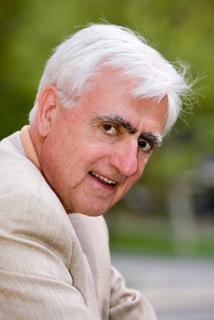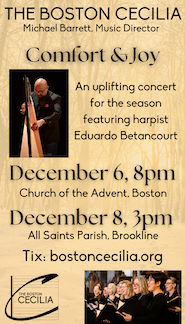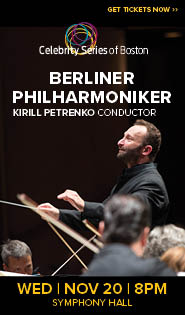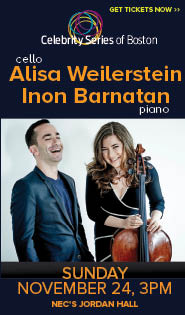Boston Musica Viva marks Shakespeare anniversary with Hoffer premiere

Bernard Hoffer’s “Lear in the Wilderness” was given its world premiere by Boston Musica Viva Saturday night.
Boston Musica Viva concluded its season Saturday night at the Tsai Performance Center with music by Arnold Schoenberg and Andy Vores. But the highlight of the program was a new work by Bernard Hoffer.
Lear in the Wilderness, which received its world premiere Saturday—the exact 400th anniversary of Shakespeare’s death–is a setting of King Lear’s rave from the final act of the Bard’s play.
Boston Musica Viva and the New England Philharmonic, which BMV director Richard Pittman also leads, regularly perform Hoffer’s music and it’s easy to hear why. His works are noted for their seamlessness of form, rich instrumental textures, clever theatrical effects, and tunefulness–the last an attractive aspect of his music that likely stems from his work with film and television.
Speaking from the stage, Hoffer stated that Lear unfolds like a film score, with the music creating the emotional context for the text. But the work, cast in five movements and spanning 30 minutes, also resembles a one-man opera scene, with sung text and instrumental lines creating a powerful dramatic arc.
The piece, scored for baritone and a sextet of violin, cello, clarinet, flute, percussion, and piano, is eerie, dark, and menacing and packs a dramatic punch. Yet there are also beautiful moments in this madness. The fourth movement, “O, ho, are you there with me?,” opens with a mournful duet between cello and violin, played with rich amber tone by Jan Müller-Szeraws and Gabriela Diaz respectively. Elsewhere the music unfolds in a flurry of scales, which dissolve into a soft hymn on piano only to explode in a series of percussive hits. The third movement, “Is’t not the king?,” churns with rhythm that come together in a Cole Porter-like groove.
Pittman led the musicians in a dramatic reading of the score to give the work bold advocacy. Baritone David Kravitz brought a clear, bell-toned voice to the role of Lear. The singer colored his lines with warmth to give the character a rounded humility. But madness won out as Kravitz delivered the final statements, “Kill, Kill, Kill,” with frightening power.
The opener, Andy Vores’ Fabrication 15: Amplification, received its second Boston performance Saturday night.
Vores’ Fabrication pieces involve an ongoing set of works scored for duos and chamber and orchestral forces. Fabrication 15 for chamber ensemble was commissioned by Boston Musica Viva and premiered in 2013.
Vores recalled how the idea for this piece originated in a warm summer day years ago when the composer took a walk by Harvard University. Someone in a house nearby was playing a rag slowly, and it captivated Vores’ imagination.
Fabrication 15 revolves around statements of a slow rag, drawn from the composer’s Joplinesque Slow Peacherine Rage for solo piano, which colorfully recalls Vores’ experience. The rag and the buzz of harmonics and bent pitches in the backing ensemble, gave the impression of the warm day of Vores’ memory.
The Welsh-born composer has a gift for transforming quoted material into clever musical invention. His choral work Spencer the Rover, which received a wonderful premiere by Chorus Pro Musica last month, and Fabrication 15 are cases in point.
The piece begins with disjointed chords that pop up all around the ensemble as if the statements are searching for a theme. The music builds into a bristling climax before dissolving to shimmering chords. Then the slow rag takes over, spreading from piano to full ensemble in its mesmerizing slow motion. Ghostly flutters, rapid scales, and sustained notes gradually creep into the texture, carrying through to the end of the piece. The rag was played with soft radiance by pianist Geoffrey Burleson, and the musicians of Boston Musica Viva gave the work a vivid and richly textured performance.
The second half of the program was dedicated to Arnold Schoenberg’s Serenade, Op. 24.
Composed between 1921 and 1923 and scored for a Pierrot-like ensemble (with guitar and mandolin replacing the piano), the Serenade is one of Schoenberg’s first pieces to use the twelve-tone method. It is a marvel of workmanship and formal procedure, with themes from early movements restated in the later ones and melodies and harmonies constructed from tone rows set in retrograde and inversion. Yet the music has a familiarity, with each movement a riff on traditional forms such as marches, theme and variations, and minuet and trio.
Central to the work is a setting of a poem by Petrarca, which tells of a man tormented by a love gone wrong. Singer David Kravitz was a stoic presence for this performance, delivering his lines with rich voice.
Pittman led a performance that fully captured the dance-like energy packed within this score. The Menuett was spacious in its tasteful shading of tempo, while the Tanzscene of the fifth movement took the shape of a burbling waltz. The first movement was also more of a waltz than the stated March as the musicians handled the side-winding phrases with commitment. The theme and variations flowed from a slyly played clarinet solo, deftly handled by William Kirkley. Kudos also belongs to violinist Gabriela Diaz, who floated a solo phrase that seemed to glow in the distance in the Finale.
Boston Musica Viva’s 2016-2017 season will open 8 p.m. September 24 at the Tsai Performance Center with music by Rakowski, Boulez, Perle, and Chang. bmv.org
Posted in Performances


